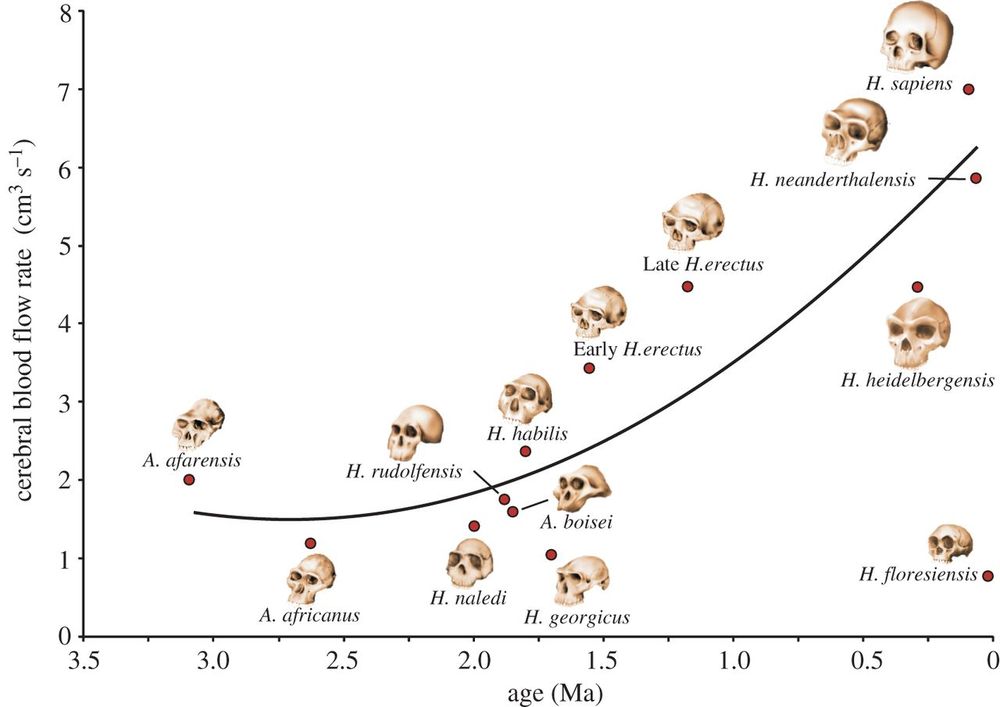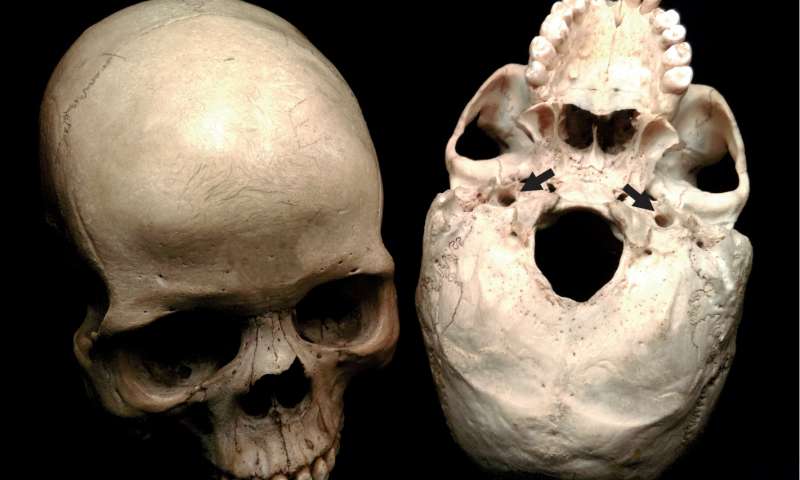
Researchers have long attributed the evolution of human intelligence to the size of the brain. It turns out that while a larger skull certainly helped, it was the extra blood sucked in by the brain that transformed humans into one of Earth’s smartest species. The surprising revelation that overturns the previous, long-standing theory, comes from a team of scientists at the University of Witwatersrand in South Africa and the University of Adelaide in Australia.
Led by University of Adelaide Professor Roger Seymour, the group examined several different Hominin fossil skulls ranging from the 3 million-year-old Australopithecus to those of modern humans. However, they did not focus on the size of the head. Instead, the scientists carefully measured and documented the diameter of the holes at the base of each skull that accommodate the blood-delivering arteries.

The researchers discovered that the size of the holes increased drastically over time, indicating that additional blood was being pumped into the brain. According to the team’s calculations, over the course of human evolution, the amount of blood supply increased by 600%, while the size of the human brain grew by only 350%.

The researchers say that as humans evolved, they took on tasks that required increased learning and problem solving. To make those connections, the brain required more oxygen and nutrients, increasing the need for blood. This in turn, meant that the arteries transporting them had to grow as well, leading to the need for bigger holes. Hence, the scientists, who published their findings in the journal Open Science on August 31, concluded that it was the larger amount of blood flowing into the brain that helped with human intelligence, not skull size.
Resources: adelaide.edu.net, phys.org